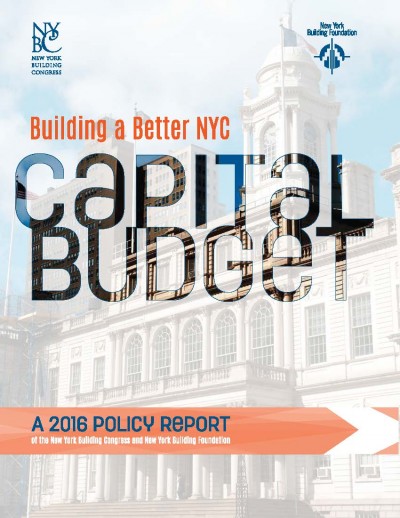
Building a Better NYC Capital Budget
Improve the Capital Budget Planning Process
The New York City capital budget is antiquated and does not offer a comprehensive picture of the condition of the City's assets. Data are not organized in ways to help managers prioritize projects and set goals based on spending constraints. These information gaps increase the cost of maintaining assets in the future. Budget documents should have more useful information, and this information should be applied in a more systematic planning process.
The City should organize a revised citywide capital planning process to better define long-term priorities and guide capital investment decisions.
As a key new element, the City should develop a twenty-year capital needs assessment, produced every four years, that looks at the full range of demographic, economic, environmental, and general infrastructure needs and aligns the City's overall capital program with them. The assessment should be a financially unconstrained statement of needs and vision. Each agency with a significant capital budget should take part in this exercise. This assessment could become a part of the existing OneNYC planning effort the City undertakes pursuant to Local Law 84.
The City should translate the assessment into a fiscally sustainable ten-year capital strategy - required under the City Charter - based on the goals of the long-term assessment and the condition of the City's capital assets. The ten-year strategy should categorize needs as State of Good Repair (SOGR), Replacement, or Expansion, and routinely measure and report progress toward meeting goals in each category.
From there, the City should adopt and fund a fixed, four-year capital program explicitly aligned with the ten-year strategy, containing measurable goals to be carried out through the four-year program. This should be distinguished from the current "rolling" plan, which lacks measurable targets and can change substantially from one year to the next.
In order to make this exercise worthwhile, the City must also require agencies to produce accurate surveys of their assets, improving on the data included in the current Asset Information Management System (AIMS) report, and then include the data in a meaningful way in its budget presentation. Without these improved surveys, the City simply cannot quantify and understand SOGR needs, greatly diminishing the accuracy and usefulness of the capital planning process.
The City should make capital budget documents clearer, with better information about each capital project.
The City should do a better job at presenting projects coherently and transparently in the capital budget. Major projects are often lost in the details of larger budget lines, or spread across multiple budget lines and projects. An easy-to-read, less fragmented presentation would offer managers a clearer picture of capital projects' progress and costs, helping to avoid major cost overruns like CityTime and the Croton Filtration Project, and facilitate a more informed discussion of costs and priorities.
The inclusion of better metrics would enable managers to track progress on projects. For example, beginning with the ten-year capital strategy, an SOGR metric might establish the proposed percentage of roads to be repaved; the annual budget would then report on incremental progress toward that goal.
 |
Another metric might propose replacement of 100 miles of sewerage in the ten-year strategy, and each subsequent annual budget would present progress toward that goal.
There are several valuable metrics the City should also include in its annual capital budget, to allow side-by-side tracking of a) when projects were committed and money appropriated; b) the original forecast cost; c) the original expected completion date; d) the current expected completion date; and e) the current total forecast cost, including change orders.
The Building Congress is developing examples of model budget documents.



